{I included a bunch of triathlon tips for beginners from beginners at the bottom of the post–if you’re interested in doing one, this will be super helpful}
Last summer I got a wild idea (truly, it was wild for me) to compete in my first triathlon. This may sound like no big deal to some people, but it turns out, I’m not a swimmer. Not as in “I don’t like to swim” but as in “I really don’t know how to swim”. I can get in the water and get from point A to point B, but I certainly don’t do it correctly and I usually have my face out of the water. Because putting my face in the water, with goggles on, and all my breathing holes (i.e nose and mouth) submerged is the perfect storm for a panic attack. I can’t explain why exactly, I just don’t like having my face in the water. And I’m a classic nose plugger (plug my nose when I jump in the water, plug my nose when I fall on the water ski, plug my nose always). Plugging your nose during a triathlon seemed like it was off the table. But I’m getting ahead of myself.
I got the idea, decided I was going to do it, and signed up for my first sprint triathlon. There three moderate hurdles I had to get over: 1. The race was only about a month away. 2. I didn’t have a road bike nor had I ever ridden a road bike. 3. I didn’t know how to swim. Minor details.
At this point, I look pretty foolish signing up for this. But I’ve secretly wanted to do one for a while and truth be told, I was sick of fear pushing me around. Sick of being scared to try things I wouldn’t automatically be good at. And sick of being SO panicked about swimming. The only way to get over these fears was to just DO it. Jump in with both feet. Without plugging my nose of course.
Usually when I’m faced with something “scary” like this, I talk a friend or family member in to doing whatever it is with me. Instead, I talked my girls into doing the kids triathlon. This would be their first race of any kind and they were both really excited about it (they’re already good swimmers–I started swimming lessons when they were young determined not to let any of my kids turn out like me when it comes to swimming).
Once I signed up and was committed, I asked a good friend (who is a great swimmer) to teach me how to freestyle properly. At first I used a nose plug but it rubbed my nose raw and didn’t work well and was serving as a crutch for my real problem. So I ditched it. She worked with me for several hours helping me figure out the stroke and breathing. Then it was up to me to practice practice practice. Which I did as little of as possible because every single time I got in the pool, I got anxious and panicky about what was ahead. But I did as much as I could tolerate and enough so I could make it the distance without having to flip too much on my back so I could catch my breath.
Next step was to get a bike. I’d been saving to get a road bike at some point anyway so this was a good push. I decided to go all in on this as well and get clip in pedals. I was really nervous about this because hello, your feet are clipped in to the pedals. For me, this has disaster written all over it. But I got some great pedals that are easy to clip in and out of (Shimano Look pedals if anyone is interested). I got the bike about 3 weeks before race day so I had a little time to practice out on the road and practice clipping my feet in and out. The great thing about the race, if all goes right, is that you really only have to clip your feet out once, at the end of the ride, when you’re transitioning to the run. Clipping my feet in and out turned out to not be a big deal at all.
If you’re interested in doing a triathlon and don’t have a bike, my guess is there are places around you that rent them. Don’t let no bike be a deal breaker.
I went on maybe 6 or 7 training rides before the race including one time where I rode the bike and then immediately went on a run so I could see what my legs felt like running right after a bike ride. If I had more time before the race I would have done this more. I also made sure I read up on Food Habits and Hacks for Runners so I could take part in the whole race and not faint halfway through!
After the bike investment, I didn’t want to spend more money on a triathlon “suit” so I just wore spandex shorts and a tight tank-top in the water for the swim, hurried and put bike shorts on during the first transition, then took the bike shorts off and put running shorts on during the last transition. Yes, that added to my total time but I wasn’t in this for any sort of time. I just wanted to DO it and see how everything works. I wasn’t terribly concerned about doing it fast.
I was incredibly nervous the night before. I laid all my stuff out by sections of the race (swim, bike, run) before I packed it in my bag. Checked and double checked to make sure I wasn’t missing a critical piece (like my biking shoes, or helmet, or goggles or any piece of equipment for that matter).
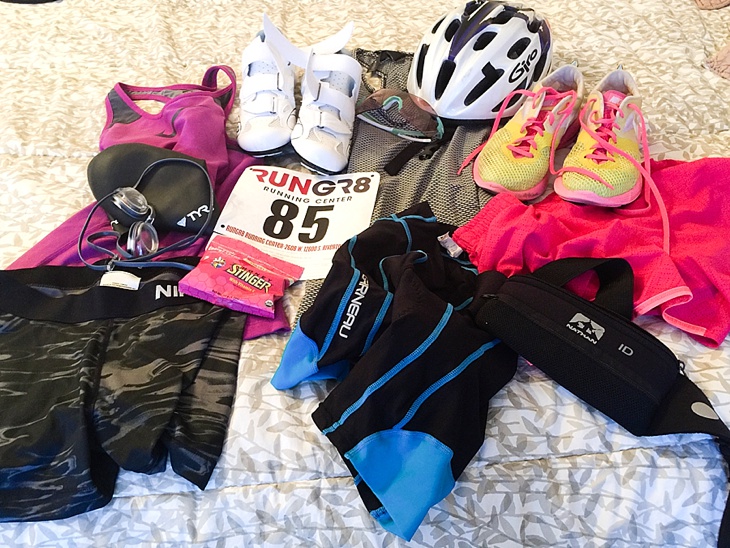
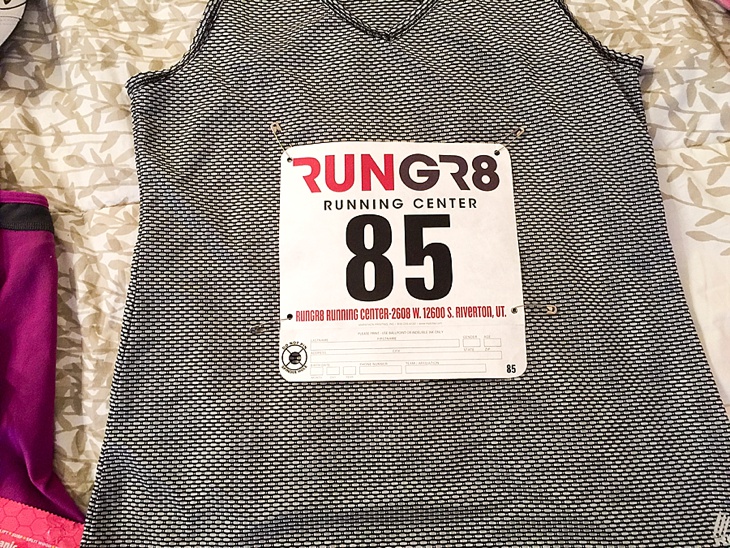
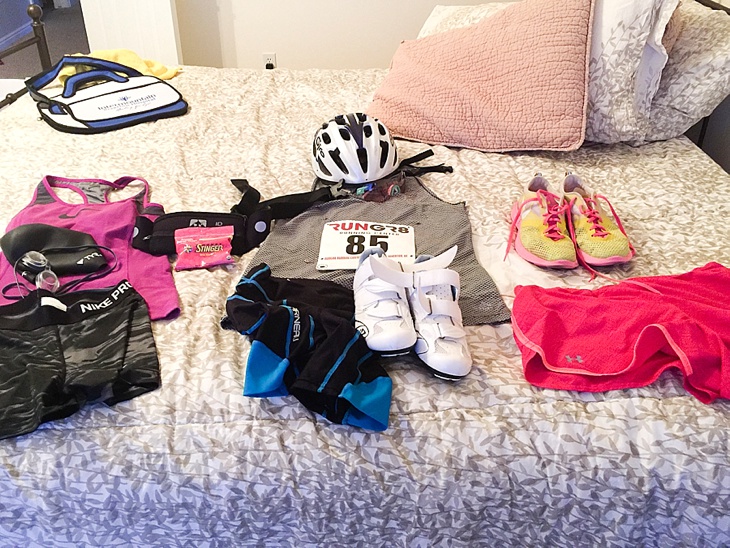 I got to the race early so I could find a good spot to put my bike. I deliberately chose a race that didn’t have a lot of competitors in it so the transition areas weren’t total chaos, but I still wanted my bike somewhere it would be easy to find. Once I picked my spot, I hung the bike seat up on the bar and laid out all my stuff so I could get to what I needed to during each transition (more tips on this at the end).
I got to the race early so I could find a good spot to put my bike. I deliberately chose a race that didn’t have a lot of competitors in it so the transition areas weren’t total chaos, but I still wanted my bike somewhere it would be easy to find. Once I picked my spot, I hung the bike seat up on the bar and laid out all my stuff so I could get to what I needed to during each transition (more tips on this at the end).
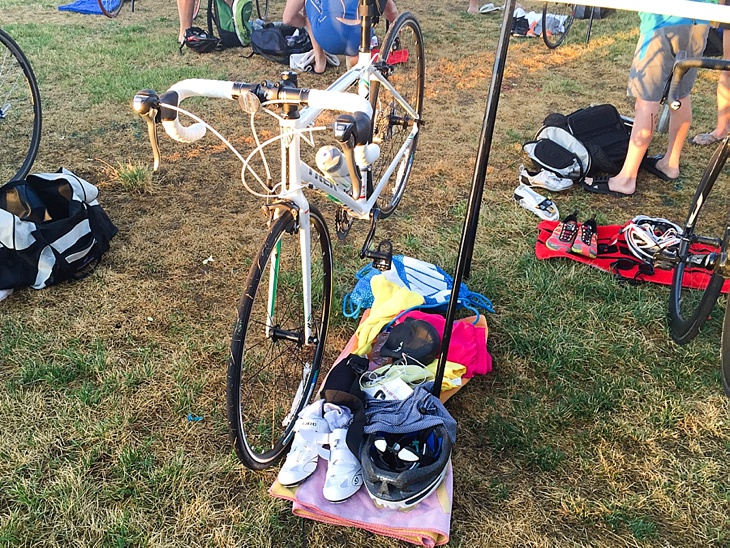

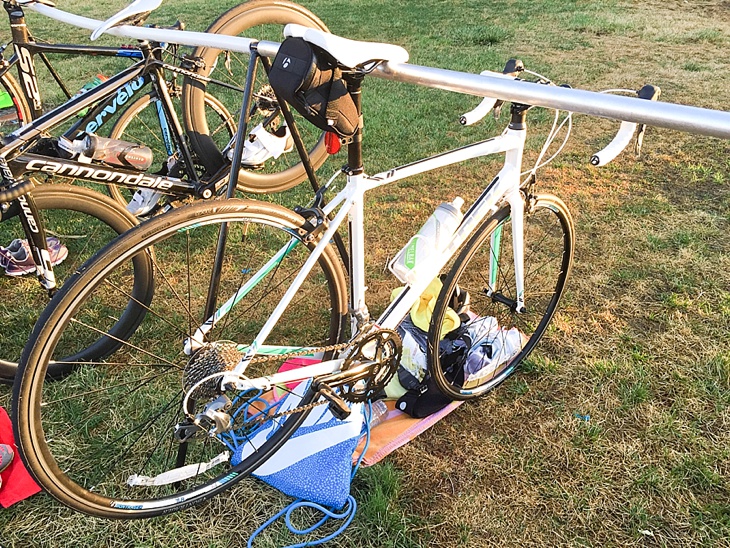
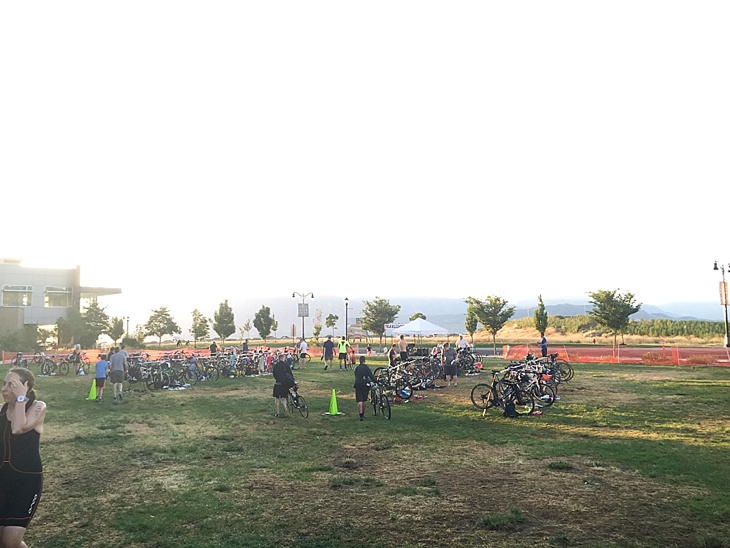 In this race the trackers were on our ankles and you ran through a “transition in” and “transition out” spot so you knew your time for your swim, your first transition, your bike, your second transition, and your run. This is helpful if you plan on being competitive about your time while racing and helps you know where you can shave time off in the future.
In this race the trackers were on our ankles and you ran through a “transition in” and “transition out” spot so you knew your time for your swim, your first transition, your bike, your second transition, and your run. This is helpful if you plan on being competitive about your time while racing and helps you know where you can shave time off in the future.
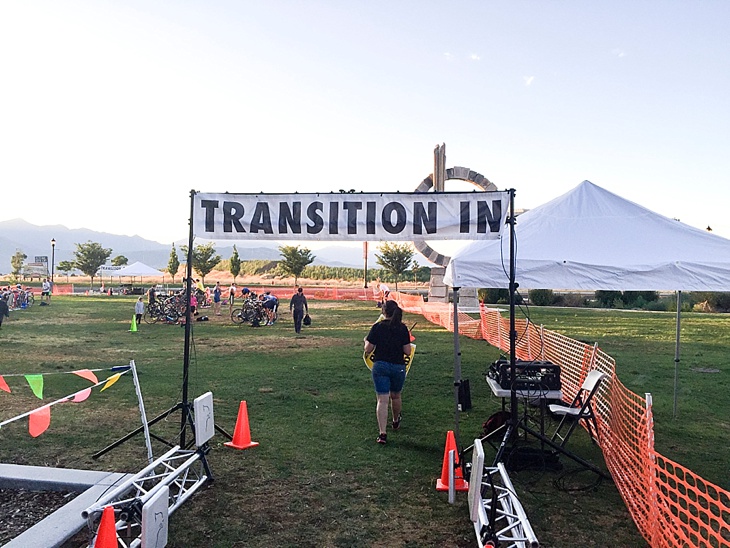
 Thankfully for me the swim was first so I could get it over with. Most of the people in line with me disagreed and weren’t looking forward to the run. The run was the one part I felt completely comfortable with. I’m not a fast runner, but I enjoy running.
Thankfully for me the swim was first so I could get it over with. Most of the people in line with me disagreed and weren’t looking forward to the run. The run was the one part I felt completely comfortable with. I’m not a fast runner, but I enjoy running.
I was towards the back of the line so I didn’t have to stress about swimming too slow and having people trying to swim over the top of me. When you swim in a pool, they stagger each person about 10 seconds apart. Because you’re being timed by a chip, they don’t start your time until you get in the pool and they tell you to go. So the time at the finish line isn’t accurate for anyone but the person who started very first. Your real time is determined by the chip you wear around your ankle.
I either got a chip too big or didn’t put it on tight enough so it fell off while I was swimming. I dove around trying to find it (and yes, I was plugging my nose while doing this)–finally found it a lane over floating on the water. I had to hold it in my hand until the end of the lane, jump out of the pool and someone helped me get it back on tight, then jumped back in and finished the swim.
The swim part ended up not being as bad as I feared. I honestly just wanted to finish under 15 minutes (it was a 400m swim–yes I realize if you’re a swimmer 15 minutes for that distance is slow, but I was just hoping not to have a panic attack about my breathing or get kicked in the face by someone. Neither of those happened so I claim success). My swim was somewhere around 12 minutes. Definitely room for improvement but I got in the freaking pool….
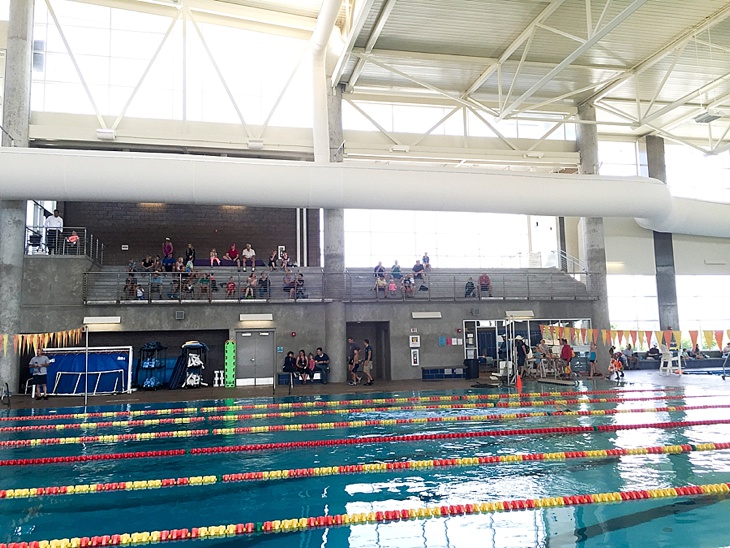
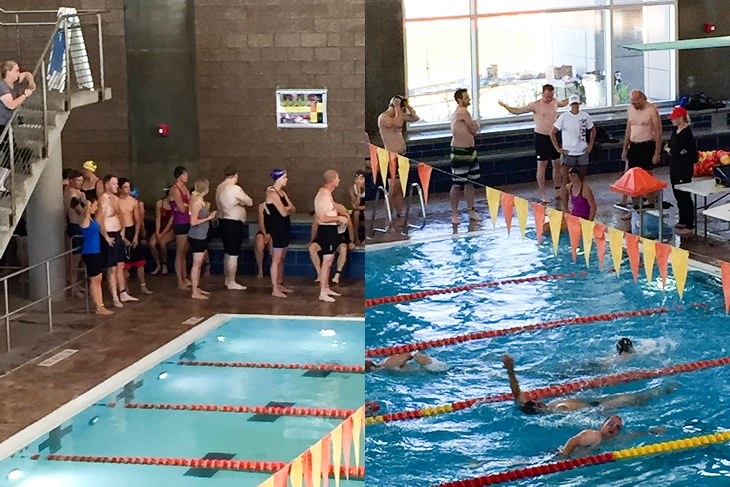 When you swim in a pool, there are people going each direction in each lane. I was worried about people climbing over the top of me in the water (I’ve heard some horror stories) but because I was toward the back of the pack on starting, it wasn’t bad at all.
When you swim in a pool, there are people going each direction in each lane. I was worried about people climbing over the top of me in the water (I’ve heard some horror stories) but because I was toward the back of the pack on starting, it wasn’t bad at all.
After the swim, I jumped out of the pool and headed toward the first transition. This is where I put on my biking gear (put biking shorts on over my spandex shorts, put a loose tank top over the one I swam in, socks and biking shoes, helmet, a pack with my phone and headphones. Some races won’t let you listen to music but this one did. It was a huge relief for me to be out of the pool.
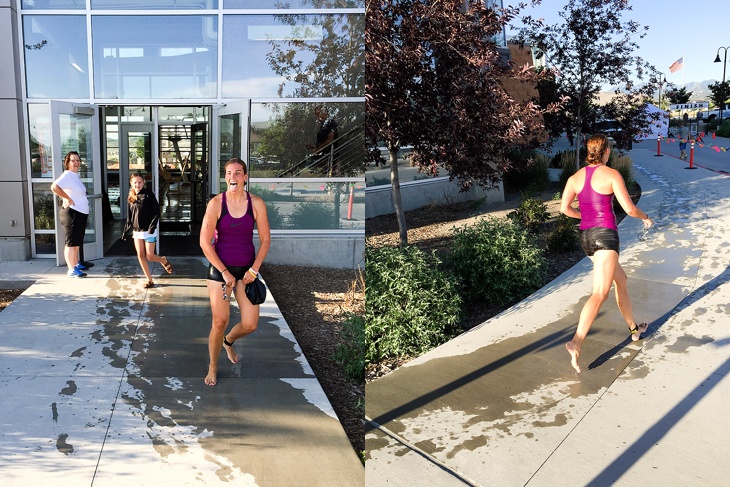
Then it was off on the bike. I believe it was 12 or 13 miles. I’m still so new to biking I haven’t figured out how hard I can push or what speed is good for me so I just rode. I drove the course of the race the night before so I knew kind of what to expect. There was one really big hill climb about half way in–mentally it was good to know that was coming. It was suuuuuper windy the last half of the race. Enough that the front of my bike was wobbling pretty bad. Thankfully crashing wasn’t on the agenda. My bike time was slower than I anticipated but not terrible.

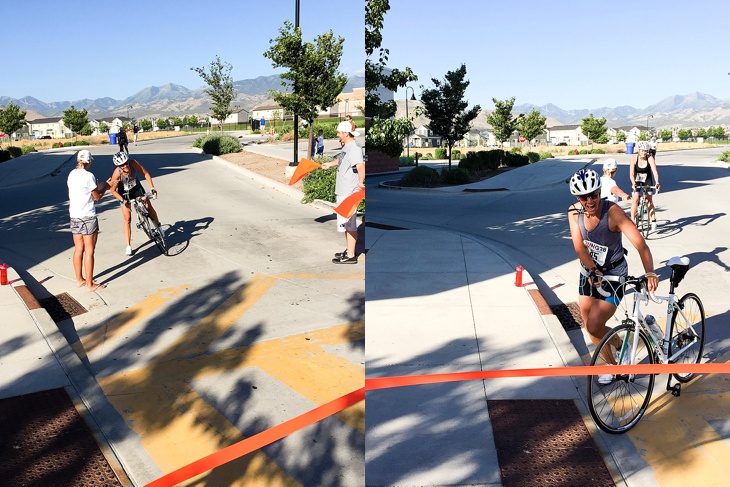 After the bike it was on to the run. My legs were a little wobbly after the bike ride, but not bad. And it wore off fast. As I was running through the transition one of the volunteers noticed I still had my bike helmet on. In my haste to get a good transition time I forgot to take it off. I didn’t feel dumb at all. Sheesh. I just tore it off and left it with him to retrieve later.
After the bike it was on to the run. My legs were a little wobbly after the bike ride, but not bad. And it wore off fast. As I was running through the transition one of the volunteers noticed I still had my bike helmet on. In my haste to get a good transition time I forgot to take it off. I didn’t feel dumb at all. Sheesh. I just tore it off and left it with him to retrieve later.
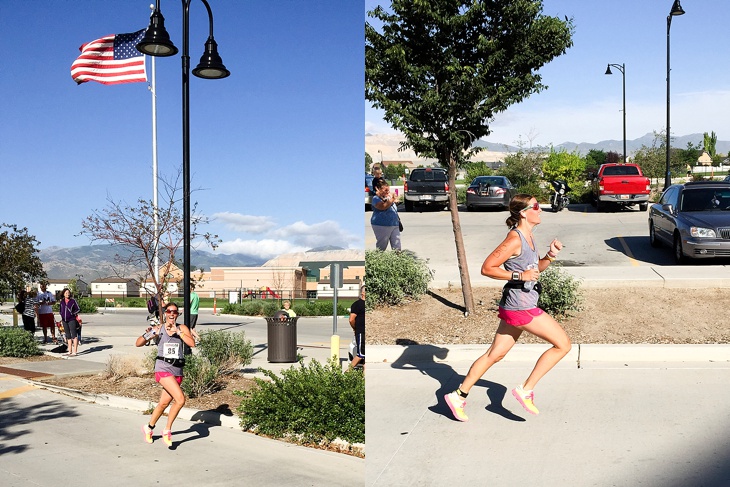
The run felt good. Like I mentioned, I’m not a fast runner. But I like to run so I was looking forward to this at the end. Now that I’ve done it, I know I can push harder on the bike and run (and the swim for that matter).

I’m always happy to finish the race, but I was especially happy (relieved) to finish this one. I love the racing spirit and it was even stronger this time. Crossing the finish line after you’ve trained hard and did something you weren’t 100% sure you could do is a feeling I haven’t been able to get any other way. My husband was there with our four young kids (who he had to drag out of bed insanely early). It’s a huge boost to have your people there cheering for you.

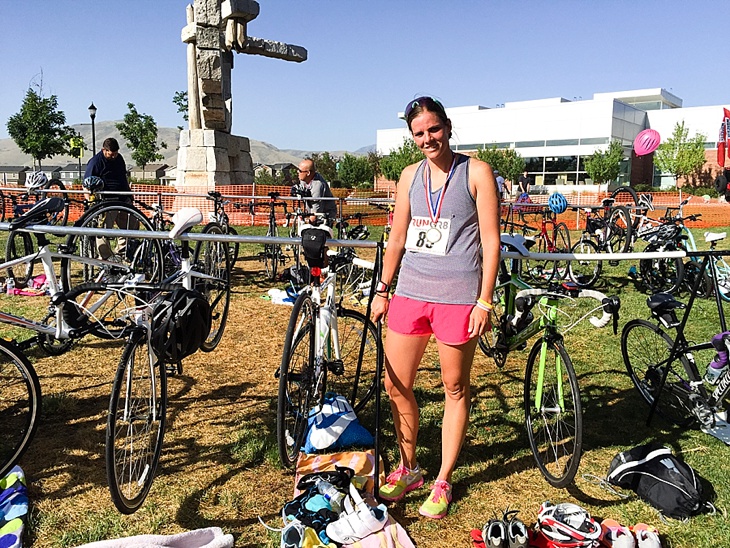
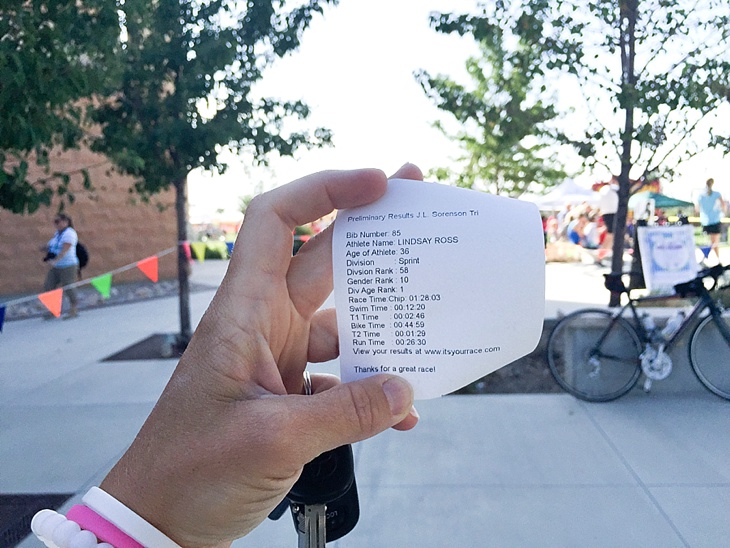
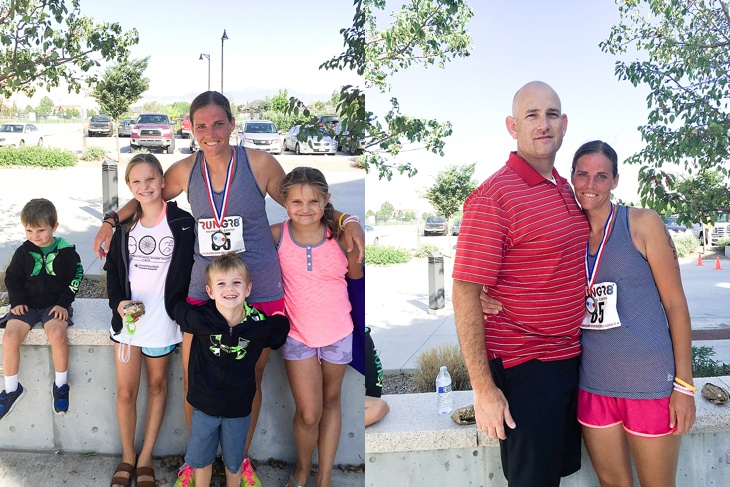 The best part is when I finished, I still had my girls race to look forward to. Watching them stand in line, painfully nervous, but inching their way forward in the swim line anyway was incredibly inspiring. This was their first race of any kind and they had no idea what to expect. But they were doing it anyway. Once they got in the water, the nerves washed away and it was nothing but smiles after that. I was more nervous for them than I was for me. There’s one level of satisfaction accomplishing something like this myself. It’s an entirely different level of satisfaction watching my kids be brave and accomplish hard things.
The best part is when I finished, I still had my girls race to look forward to. Watching them stand in line, painfully nervous, but inching their way forward in the swim line anyway was incredibly inspiring. This was their first race of any kind and they had no idea what to expect. But they were doing it anyway. Once they got in the water, the nerves washed away and it was nothing but smiles after that. I was more nervous for them than I was for me. There’s one level of satisfaction accomplishing something like this myself. It’s an entirely different level of satisfaction watching my kids be brave and accomplish hard things.
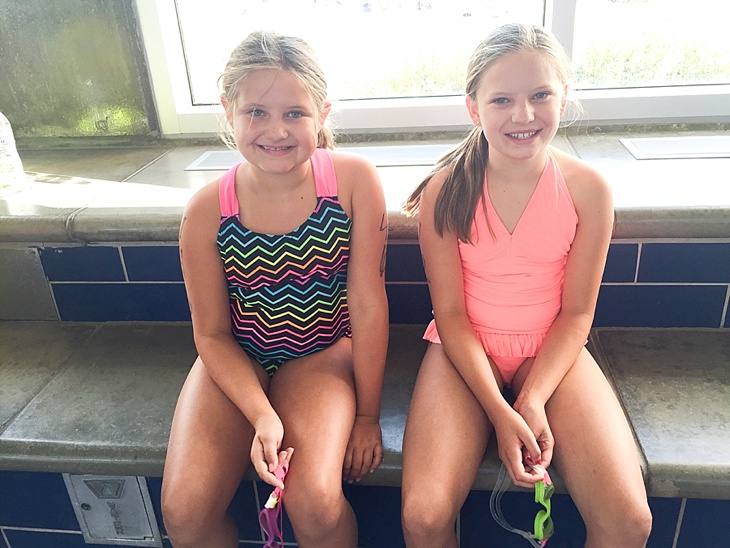
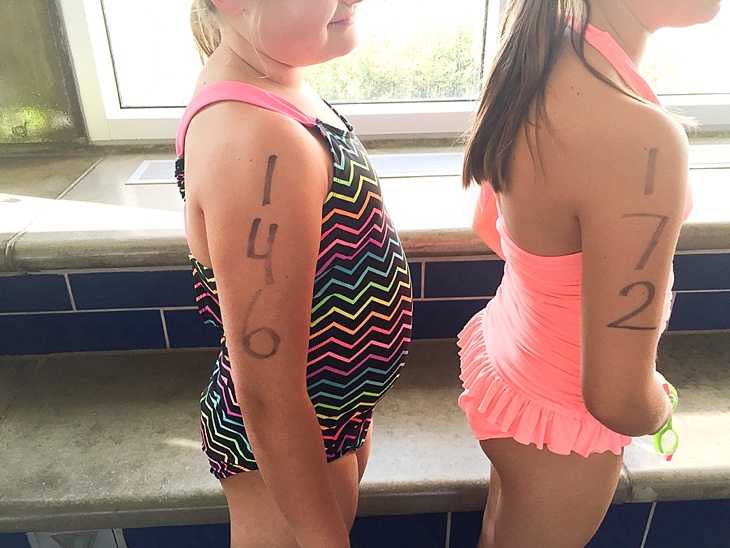
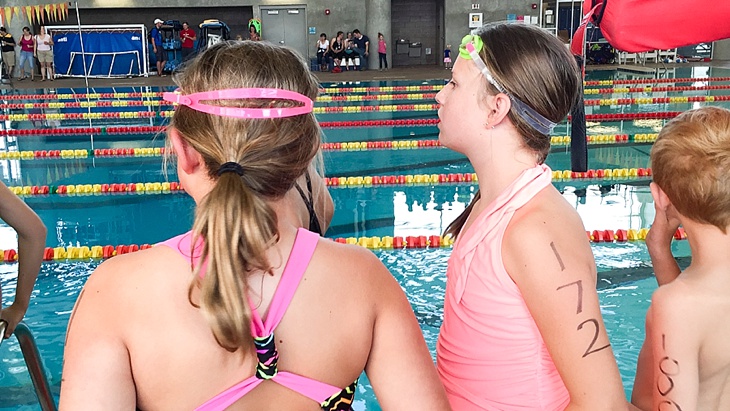
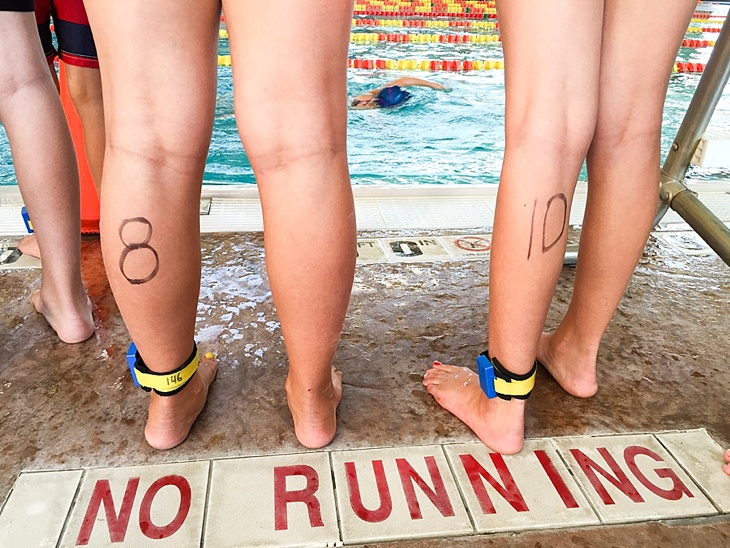


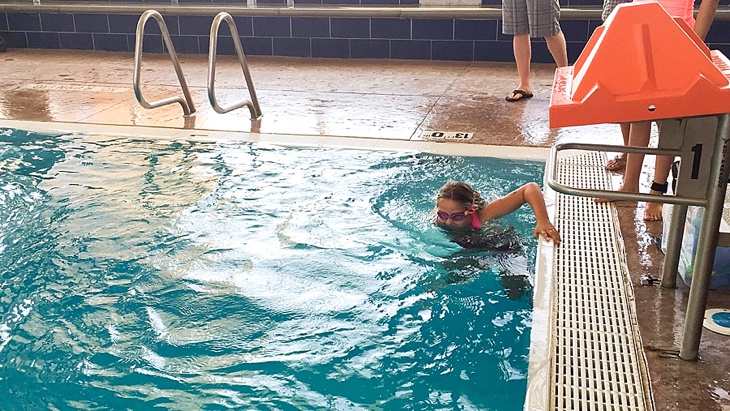
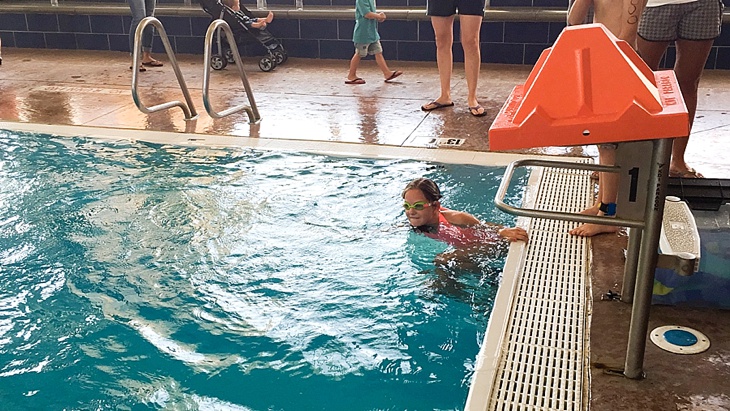
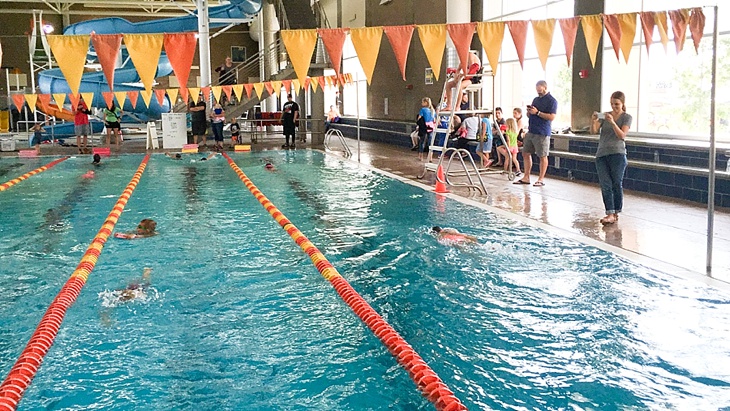
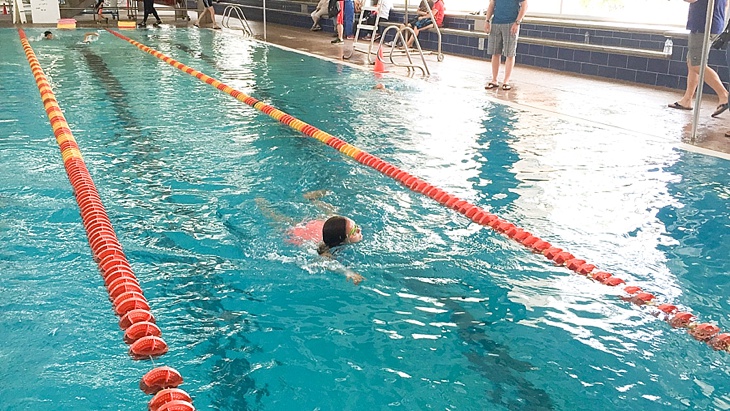
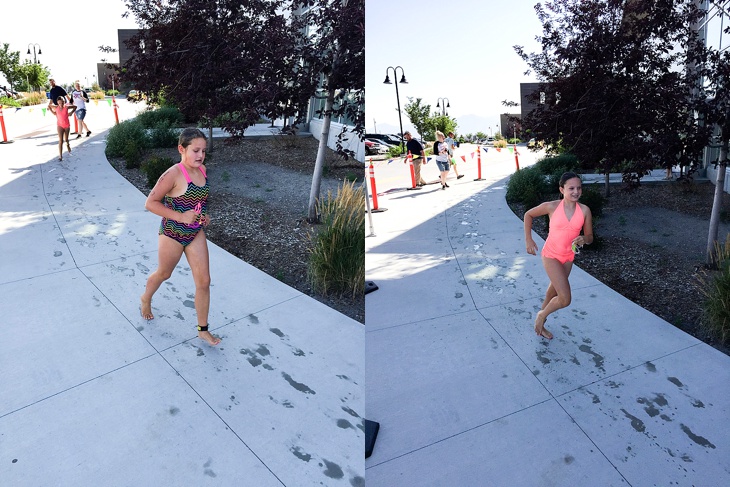
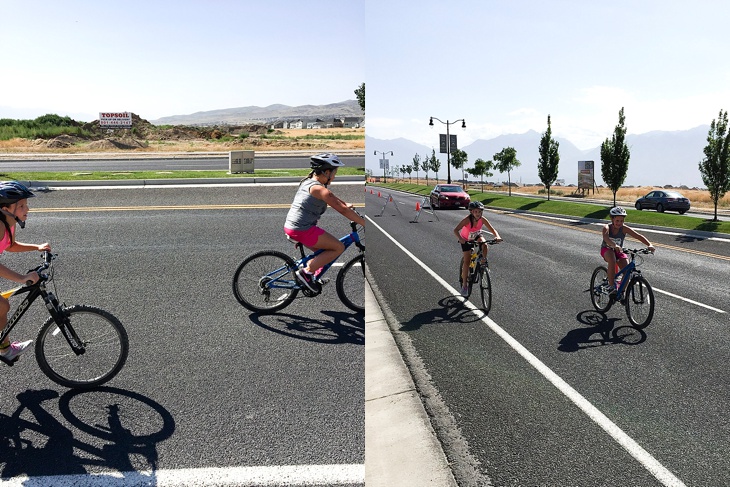

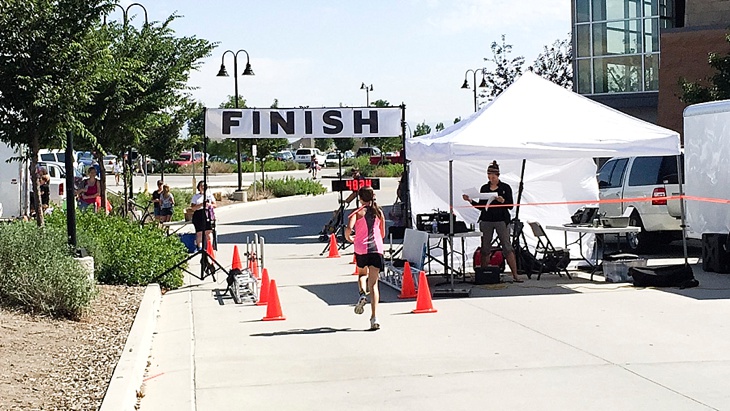
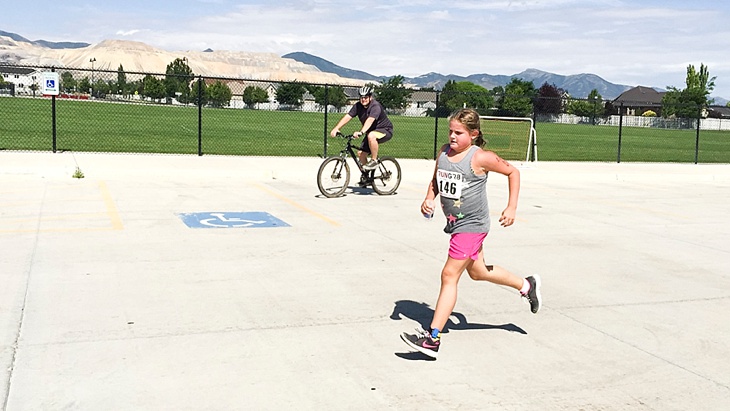
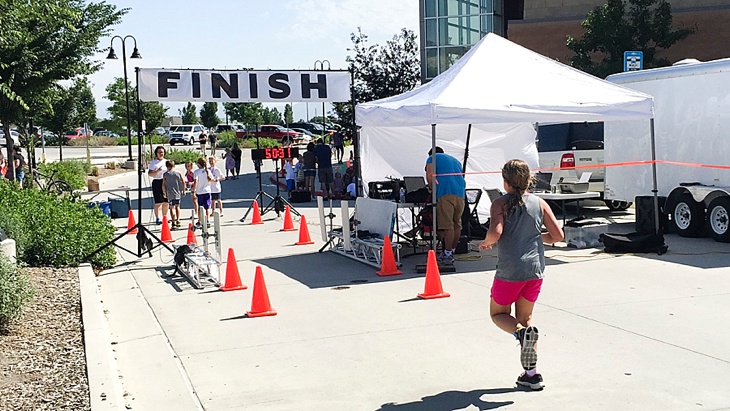
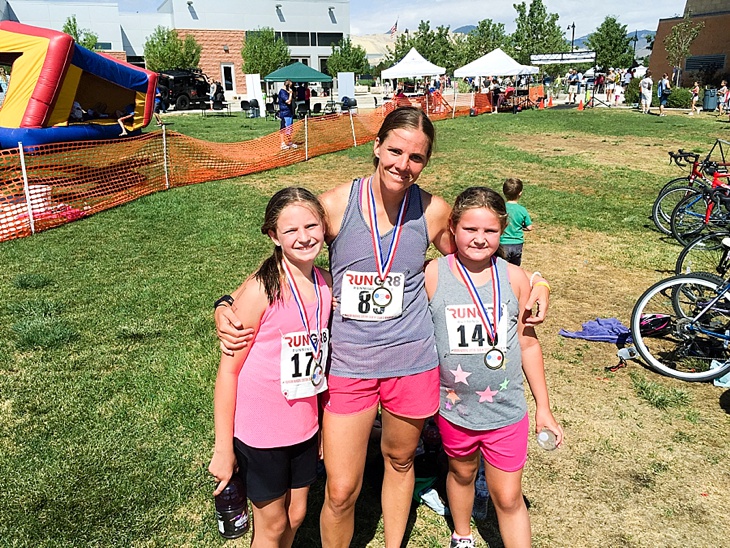
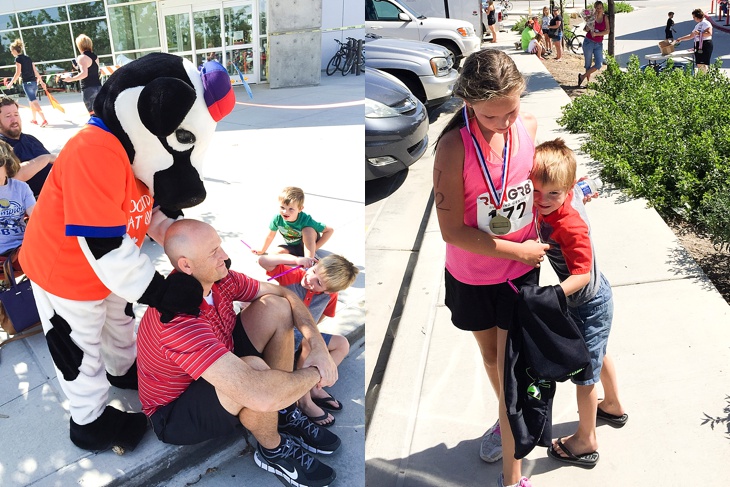

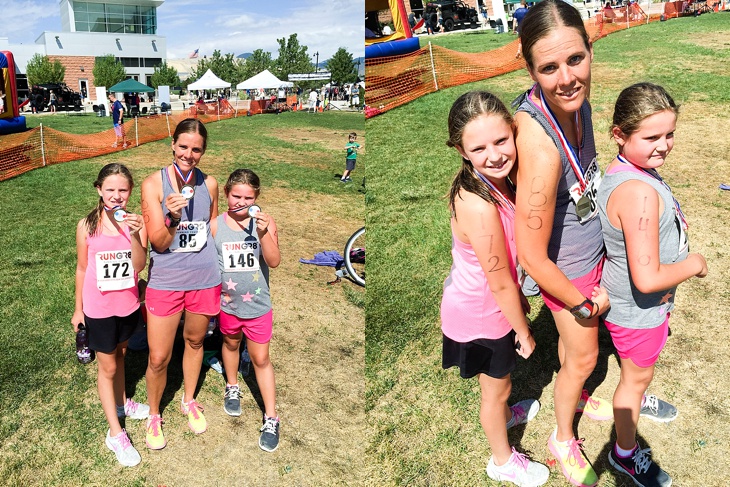
A day we’ll certainly never forget and one I’m grateful we got to do together. I’m looking forward to doing another triathlon in the future. Just have to talk myself into that dang swim again.
Before I did this race, I searched the internet for all the tips and advice I could find. I read blogs and articles and watched YouTube videos to get a sense for what the race would be like. I’m an over-preparer and I like to know what I’m getting in to. So I thought I’d pass on some of the things I learned. I’ve only done one triathlon. I’m obviously not an expert but sometimes tips from a beginner for beginners can be helpful. I also asked my brother-in-law and sister-in-law who also did their first triathlons last year to help me. Together we compiled a small list of tips.
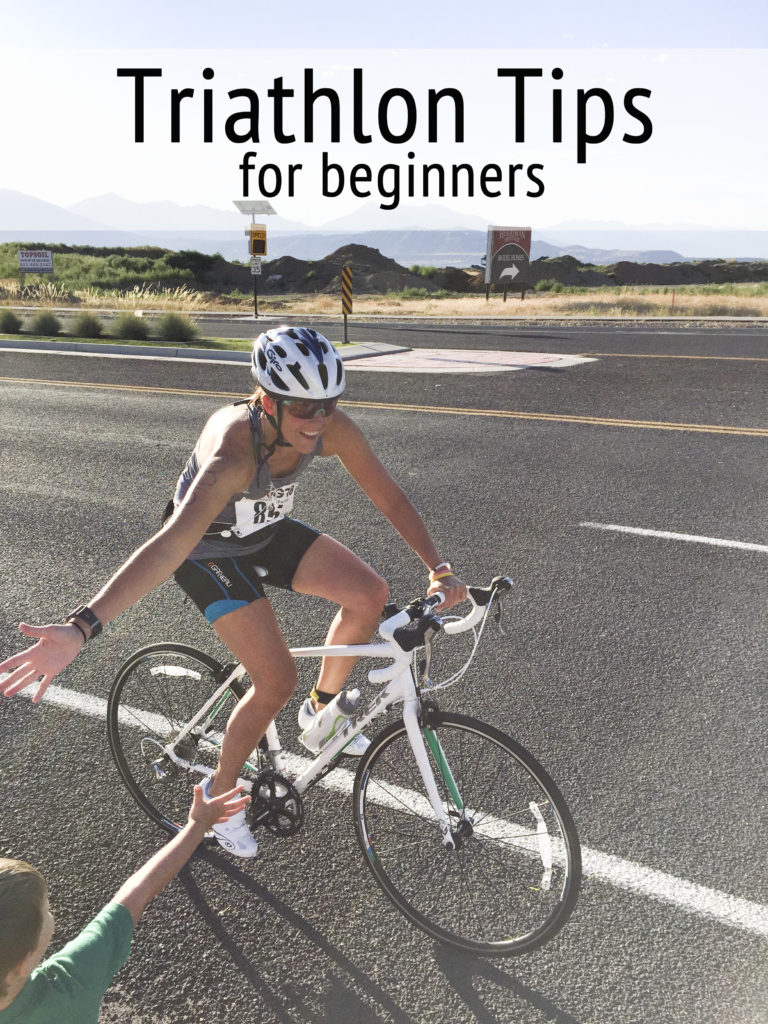
**If this is your first triathlon, don’t stress too much about time. There’s a bit of a learning curve and the only way to really learn is to DO. I’m competitive and didn’t want to get a crappy time, but I also knew part of this process was enjoying it and learning what I could.
**Do at least a few training runs in the same clothes you’ll wear on race day. You’ll want to know ahead of time if certain clothing is going to bug. And everything changes when things are wet. Hello rashes.
**If your race is longer than 45 minutes to an hour, you’ll need some sort of nutrition. Whatever you plan to eat on race day is what you need to train with. Some foods upset people’s stomach when exercising. That’s not something you want to discover on race day. Trust me on that one. When you eat and how often is pretty personal based on how your body responds. I usually eat about 50 minutes in and then every 30-45 minutes after that depending on how I feel. If your body starts to tank, you waited too long. I like the Honey Stingers Energy Chews during the race.
Also figure out what you’ll eat before the race. Eat this same thing before training runs to make sure it settles well in your stomach. I like bagels, peanut butter on toast, or a protein bar. You’ll probably feel nervous the day of the race and may not feel like eating. Try to at least get something in your body for energy.
**Try to do a few training runs where you do 2 of the 3 events (called a brick). So bike and then immediately run. Or, if you have the time, do all three events for a training run. Map out a course and practice doing your transitions. It’s helpful to know what your body will feel like moving from one event to the next.
**Practice the transitions. Once you’ve trained a lot, it gets harder and harder to shave time off any one event. One place you can really save time is in the transitions. Lay your clothing out so it’s easy to find and get on in the order you need to get it on. Open the velcro on your shoes, put the helmet upside down with the buckle open, have your sunglasses open and glove straps undone, untie the laces on your running shoes, etc.
**Have something to wipe your feet off with after the swim. Putting socks on wet feet is stupid hard. Having a towel to dry them quickly is a huge help. If you run in sand after your swim, you may want a bucket of water to rinse your feet quickly and then wipe them off.
**I brought a towel to lay under all my gear so it wouldn’t get wet or muddy in the transition area
**Make sure you know the course–knowledge is power and can help eliminate confusion and keep your time down. Know what direction you are swimming, are there any turns, if so how many. In open water swimming make sure you practice sighting so you do not go off course and swim further then you have too. Drive the bike course so you know exactly where you are going and if there is a turnaround where it is. Drive the running course so you have an idea of where you are at all times and when you’re getting close to the end. PPPPPP (proper prior planning prevents poor performance).
**get to the race early so you can get a good spot for your bike. After the swim, you’re dripping wet and can be a little disoriented. It’s helpful to have your bike somewhere it’s easy to find.
**make sure you have good goggles that fit and don’t leak. You don’t want to have leaky goggles when you’re trying not to die swimming like Michael Phelps.
**if you’re doing an open water swim, try to practice swimming in open water. If you’re allowed to wear a wet suit on your swim, try practicing swimming in that as well. And, practice taking your wet suit off after the swim. I didn’t wear a wet suit in my race, but I’ve worn one at the lake before and I swear I almost dislocated a shoulder trying to get that thing off. Practice. (I’ve heard spraying yourself with cooking oil helps when you take it off–I have never done this so don’t take my word for it).
**If there’s a kids triathlon and you have kids, sign them up for the race as well. This was huge motivation to get me through my race quickly-ish so I could be there to watch theirs. And it was a day we’ll never forget.
If anyone has questions, please feel free to ask. I was so nervous about doing this and did a TON of research before I did. No question is dumb. I’m sure I had the same question before I did my race.
If you’ve ever thought about doing a triathlon, DO IT. If I can do it, trust me, you can too. Go get it!
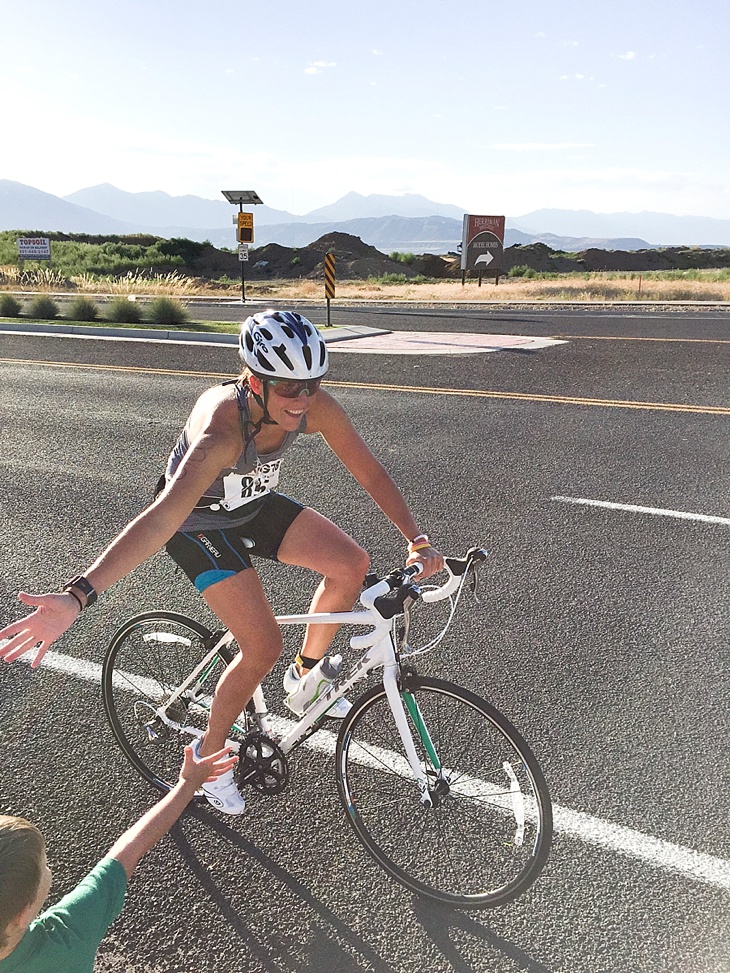
Lindsay—Thank you for this helpful and inspiring article! I just signed up for my first tri called FirstTry Tri designed especially for newbies. I’m pretty psyched! It’s in 12 weeks so I have time to work on that swimming thing. Great tips and great article. Rock on! Traci